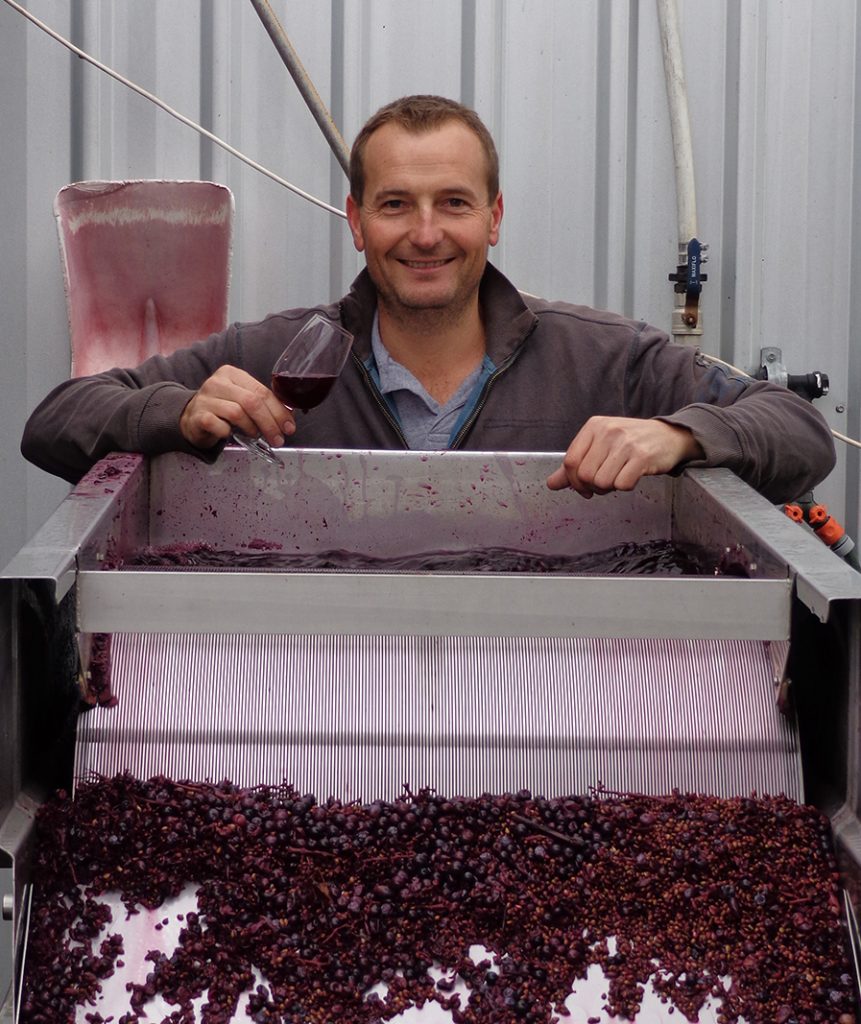“Shiraz is a versatile grape and it’s amazing how the same grape variety can give such different wines based on where it is grown, vine age, soil type, season, etc.
I’ve worked with Shiraz all over Australia (Barossa, Clare, McLaren Vale, Coonawarra, Great Western, Mildura, etc) as well as in USA (California – Sonoma, Mendocino, Lake County, North Coast).
Whilst many regions can make fantastic Shiraz, I genuinely believe the Barossa has evolved to become the world’s home of top-quality Shiraz for good reason. The combination of the soil and climate in the Barossa as well as being phylloxera free (vines can be grown on own roots) has allowed Shiraz of the highest calibre to be grown and made here.”
Do you see differences across the Kalleske estate?
“Across our own Kalleske property I see meaningful and valuable differences between our nineteen different blocks of Shiraz. Generally our soils are red-brown earth with sub clay. This gives wines of generous flavour but superb balance. The slightly sandier soils generally give Shiraz with more finesse and aromatics and the heavier soils give fuller bodied wines. Ironstone, quartz stone and limestone spread throughout the blocks all also add character. Younger vines (say <~50 years old) can give rich, fruit driven, flavoursome volumous wines but when you get to old vines there is an extra ‘wow’ factor to what they offer. I find our Kalleske Old Vine Shiraz vineyards (that make Johann Georg and Eduard as well as some going into Moppa) are not necessarily the ‘biggest/gutsiest’ wines but they are the most complex. The old vines give an extra textural component as well as a natural savoury/umami character – that you just don’t get in younger vines. I don’t only see this in our Kalleske old vine Shiraz but also in other Barossa old vine Shiraz wines.
With our wines we importantly pick some blocks/rows quite early to get brighter, fresher, red fruits, aromatics, perfume and crunchy acid. We also pick some blocks quite late to get ripe, rich black fruits, really mouth-filling and generous wines. Then these components are carefully blended to make a complex wine that offers everything – bright, perfumed, aromatic but full-flavoured with rich fruits and structure and well balanced.
We are very careful with our oak selection to ensure it supports the fruit and doesn’t dominate. After all, wine should be about the grape. Our top end Johann Georg Shiraz only has extra tight grain French oak. It is matured in barrel for 2 years so oak is slower to integrate and the tight grain French is very subtle so it works perfectly with the sublime and fine old vine fruit character. This is similar for Eduard Shiraz although this also has a small amount of fine American oak maturation to add some additional mid palate richness. The Greenock and Moppa Shiraz are only in barrel for around 14-16 months, less new oak is used for these wines and the oak is mid fine grain to integrate quicker into the wine. French and American are used (as well as Hungarian in Moppa) to add both savoury complexity and richness.
In general our philosophy is that wine should be all about the grapes that reflect the vineyard – the time and the place where it is grown. The best way to do this is to farm naturally (organically/biodynamically) and rely on native vineyard yeast for fermentation, natural malolactic fermentation, traditional open-top fermenter vinification and not use additives such as tannins, enzymes or fining agents. And oak barrels are used smartly to enhance the wine during maturation. We believe these methods allow our Shiraz to be reflective of not just Australian Shiraz or Barossa Shiraz but importantly Kalleske Shiraz.”
How much impact do you think your past experience working in other wineries have in making shiraz?
“Everywhere I have worked previously has to a degree some influence on what I do with our Kalleske Shiraz today. It’s given me the experience of what can be done, why things are done, what needs to be done and why things don’t need to be done. Ultimately, I have learned that what I’ll call manipulative/interventional winemaking can make sound, technically correct, commercially appealing wines of great appeal to many and consistent style.
However, I have come to the conclusion that wine should be about the vineyard and not about the winery. So, if you have sound, quality naturally grown grapes then the winemaking can be very hands off where you essentially ‘guide the grapes into the bottle’ with minimal, if any intervention and hence the time and place (terroir) is genuinely reflected in the resultant wine.
I feel these Shiraz wines are more authentic, more interesting, genuinely unique and of greater appeal.”

